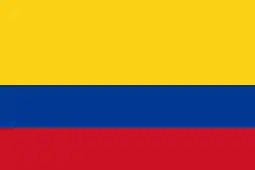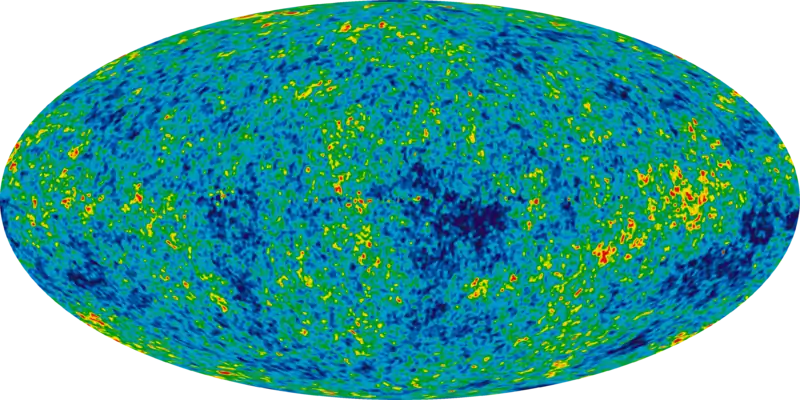Outline of astronomy
The following outline is provided as an overview of and topical guide to astronomy:

Mauna Kea in Hawaii is one of the world's premier observatory sites. Pictured is the W. M. Keck Observatory, an optical interferometer.
Astronomy – studies the universe beyond Earth, including its formation and development, and the evolution, physics, chemistry, meteorology, and motion of celestial objects (such as galaxies, planets, etc.) and phenomena that originate outside the atmosphere of Earth (such as the cosmic background radiation). Astronomy also connects with Biology as it has to do with life on different celestial objects.
Nature of astronomy
Astronomy can be described as all the following:
- An academic discipline: one with academic departments, curricula and degrees; national and international societies; and specialized journals.
- A scientific field (a branch of science) – widely recognized category of specialized expertise within science, and typically embodies it
- A natural science – one that seeks to elucidate the rules that govern the natural world using empirical and scientific methods.
- A branch or field of space science
- A natural science – one that seeks to elucidate the rules that govern the natural world using empirical and scientific methods.
- A hobby or part-time pursuit for the satisfaction of personal curiosity or appreciation of beauty, the latter especially including astrophotography.
Branches of astronomy
- Astrobiology – studies the advent and evolution of biological systems in the universe.
- Astrophysics – branch of astronomy that deals with the physics of the universe, including the physical properties of celestial objects, as well as their interactions and behavior.[1] Among the objects studied are galaxies, stars, planets, exoplanets, the interstellar medium and the cosmic microwave background; and the properties examined include luminosity, density, temperature, and chemical composition. The subdisciplines of theoretical astrophysics are:
- Compact objects – this subdiscipline studies very dense matter in white dwarfs and neutron stars and their effects on environments including accretion.
- Physical cosmology – origin and evolution of the universe as a whole. The study of cosmology is theoretical astrophysics at its largest scale.
- Computational astrophysics – The study of astrophysics using computational methods and tools to develop computational models.
- Galactic astronomy – deals with the structure and components of our galaxy and of other galaxies.
- High energy astrophysics – studies phenomena occurring at high energies including active galactic nuclei, supernovae, gamma-ray bursts, quasars, and shocks.
- Interstellar astrophysics – study of the interstellar medium, intergalactic medium and dust.
- Extragalactic astronomy – study of objects (mainly galaxies) outside our galaxy, including Galaxy formation and evolution.
- Stellar astronomy – concerned with Star formation, physical properties, main sequence life span, variability, stellar evolution and extinction.
- Plasma astrophysics – studies properties of plasma in outer space.
- Relativistic astrophysics – studies effects of special relativity and general relativity in astrophysical contexts including gravitational waves, gravitational lensing and black holes.
- Solar physics – Sun and its interaction with the remainder of the Solar System and interstellar space.
- Planetary Science – study of planets, moons, and planetary systems.
- Atmospheric science – study of atmospheres and weather.
- Exoplanetology – various planets outside of the Solar System
- Planetary formation – formation of planets and moons in the context of the formation and evolution of the Solar System.
- Planetary rings – dynamics, stability, and composition of planetary rings
- Magnetospheres – magnetic fields of planets and moons
- Planetary surfaces – surface geology of planets and moons
- Planetary interiors – interior composition of planets and moons
- Small Solar System bodies – smallest gravitationally bound bodies, including asteroids, comets, and Kuiper belt objects.
- Astronomy divided by general technique used for astronomical research:
- Astrometry – study of the position of objects in the sky and their changes of position. Defines the system of coordinates used and the kinematics of objects in our galaxy.
- Observational astronomy – practice of observing celestial objects by using telescopes and other astronomical apparatus. It is concerned with recording data. The subdisciplines of observational astronomy are generally made by the specifications of the detectors:
- Radio astronomy – Above 300 µm
- Submillimetre astronomy – 200 µm to 1 mm
- Infrared astronomy – 0.7–350 µm
- Optical astronomy – 380–750 nm
- Ultraviolet astronomy – 10–320 nm
- X-ray astronomy – 0.01–10 nm
- Gamma-ray astronomy – Below 0.01 nm
- Cosmic ray astronomy – Cosmic rays, including plasma
- Neutrino astronomy – Neutrinos
- Gravitational wave astronomy – Gravitons
- Photometry – study of how bright celestial objects are when passed through different filters
- Spectroscopy – study of the spectra of astronomical objects
- Other disciplines that may be considered part of astronomy:
History of astronomy
- History of the Center of the Universe
- Archaeoastronomy
- Pretelescopic astronomy
- Babylonian astronomy
- Chinese astronomy
- Egyptian astronomy
- Greek astronomy
- Hebrew astronomy
- Indian astronomy
- Islamic astronomy
- Russian astronomy
- Astronomy in the Middle Ages
- History of astronomy in the Renaissance
- Scientific developments during the Scientific Revolution
- Patronage in astronomy
- Copernican Revolution
- Copernican heliocentrism
- Nicolaus Copernicus
- Tycho Brahe
- Galileo Galilei
- Dialogue Concerning the Two Chief World Systems defense of the heliocentric system written by Galileo, which led to his trial and house arrest by the Inquisition.
- Invention of the telescope
- Scientific developments during the Scientific Revolution
- History of astronomy in the Age of Reflection
- Radio astronomy#History of radio astronomy
- History of X-ray astronomy
- History of infrared astronomy
- History of gamma-ray astronomy
- History of supernova observation
Basic astronomical phenomena
Astronomical objects
Solar System
![]()
Sun
- Location
- Stellar classification
- Internal structure
- Stellar atmosphere
- Solar variation
- Heliosphere
- Related phenomena
- Equipment used to study the Sun
Planets
- Planet
- Features
- Natural satellites (moons)
- Planetary rings
- Features
- Planets of the Solar System
- Dwarf planets of the Solar System
Small Solar System bodies
- Asteroids
- Minor planets
- Category:Asteroid groups and families
- List of asteroids
- Meanings of asteroid names
- Trans-Neptunian objects
Exoplanets
- Exoplanet (also known as extrasolar planets) – planet outside the Solar System. A total of 4,341 such planets have been identified as of 28 Jan 2021.
- Super-Earth – exoplanet with a mass higher than Earth's, but substantially below those of the Solar System's ice giants.
- Mini-Neptune – also known as a gas dwarf or transitional planet. A planet up to 10 Earth masses, but less massive than Uranus and Neptune.
- Super-Jupiter – an exoplanet more massive than Jupiter.
- Sub-Earth – an exoplanet "substantially less massive" than Earth and Venus.
- Circumbinary planet – an exoplanet that orbits two stars.
- Hot Jupiter – an exoplanet whose characteristics are similar to Jupiter, but that have high surface temperatures because they orbit very close to their parent stars, whereas Jupiter orbits its parent star (the Sun) at 5.2 AU (780×106 km), causing low surface temperatures.
- Hot Neptune – an exoplanet in an orbit close to its star (normally less than one astronomical unit away), with a mass similar to that of Uranus or Neptune.
- Pulsar planet – a planet that orbits a pulsar or a rapidly rotating neutron star.
- Rogue planet (also known as an interstellar planet) – a planetary-mass object that orbits the galaxy directly.
Stars
- Stellar evolution
- Star formation
- Pre–main sequence
- Main sequence
- Horizontal branch
- Asymptotic giant branch
- Dredge-up
- Instability strip
- Red clump
- PG 1159 star
- Mira variable
- Planetary nebula
- Protoplanetary nebula
- Luminous red nova
- Luminous blue variable
- Wolf–Rayet star
- Supernova impostor
- Supernova
- Hypernova
- Hertzsprung–Russell diagram
- Color–color diagram
- Protostars
- Luminosity class
- Stellar classification
- Remnants
- Failed and theoretical stars
- Stellar nucleosynthesis
- Stellar structure
- Properties
- Star systems
- Earth-centric observation of stars
- Lists of stars
- List of proper names of stars
- List of Arabic star names
- Traditional Chinese star names
- List of most massive stars
- List of least massive stars
- List of largest known stars
- List of brightest stars
- List of most luminous stars
- List of nearest stars
- List of exoplanetary host stars
- List of brown dwarfs
- List of planetary nebulae
- List of novae
- List of supernovae
- List of supernova remnants
- List of supernova candidates
- Timeline of stellar astronomy
Variable stars
- Pulsating
- Cepheids and cepheid-like
- Blue-white with early spectra
- Long Period and Semiregular
- Other
- Eruptive
- Pre-main sequence star
- Main Sequence
- Giants and supergiants
- Eruptive binary
- Cataclysmic or explosive
- Cataclysmic variable star
- Dwarf nova
- Nova
- Supernova
- Z Andromedae
- Rotating
- Non-spherical
- Ellipsoidal
- Stellar spots
- FK Comae Berenices
- BY Draconis variable
- Magnetic fields
- Alpha² Canum Venaticorum variable
- SX Arietis
- Pulsar
- Non-spherical
- Eclipsing binary
Supernovae
- Classes
- Related
- Structure
- Progenitors
- Remnants
- Discovery
- Notable
- Research
Black holes
.jpg.webp)
Artist's representation of a black hole.
- Types
- Size
- Formation
- Stellar evolution
- Gravitational collapse
- Neutron star (Template:neutron star)
- Compact star
- Tolman–Oppenheimer–Volkoff limit
- White dwarf (Template:white dwarf)
- Supernova (Template:supernovae)
- Hypernova
- Gamma-ray burst
- Properties
- Models
- Issues
- Metrics
- Related
Constellations
The 88 modern constellations
- Andromeda
- Antlia
- Apus
- Aquarius
- Aquila
- Ara
- Aries
- Auriga
- Boötes
- Caelum
- Camelopardalis
- Cancer
- Canes Venatici
- Canis Major
- Canis Minor
- Capricornus
- Carina
- Cassiopeia
- Centaurus
- Cepheus
- Cetus
- Chamaeleon
- Circinus
- Columba
- Coma Berenices
- Corona Australis
- Corona Borealis
- Corvus
- Crater
- Crux
- Cygnus
- Delphinus
- Dorado
- Draco
- Equuleus
- Eridanus
- Fornax
- Gemini
- Grus
- Hercules
- Horologium
- Hydra
- Hydrus
- Indus
- Lacerta
- Leo
- Leo Minor
- Lepus
- Libra
- Lupus
- Lynx
- Lyra
- Mensa
- Microscopium
- Monoceros
- Musca
- Norma
- Octans
- Ophiuchus
- Orion
- Pavo
- Pegasus
- Perseus
- Phoenix
- Pictor
- Pisces
- Piscis Austrinus
- Puppis
- Pyxis
- Reticulum
- Sagitta
- Sagittarius
- Scorpius
- Sculptor
- Scutum
- Serpens
- Sextans
- Taurus
- Telescopium
- Triangulum
- Triangulum Australe
- Tucana
- Ursa Major
- Ursa Minor
- Vela
- Virgo
- Volans
- Vulpecula
The 48 constellations listed by Ptolemy after 150 AD
- Andromeda
- Aquarius
- Aquila
- Ara
- Argo Navis
- Aries
- Auriga
- Boötes
- Cancer
- Canis Major
- Canis Minor
- Capricornus
- Cassiopeia
- Centaurus
- Cepheus
- Cetus
- Corona Australis
- Corona Borealis
- Corvus
- Crater
- Cygnus
- Delphinus
- Draco
- Equuleus
- Eridanus
- Gemini
- Hercules
- Hydra
- Leo
- Lepus
- Libra
- Lupus
- Lyra
- Ophiuchus
- Orion
- Pegasus
- Perseus
- Pisces
- Piscis Austrinus
- Sagitta
- Sagittarius
- Scorpius
- Serpens
- Taurus
- Triangulum
- Ursa Major
- Ursa Minor
- Virgo
The 41 additional constellations added in the 16th and 17th centuries
- Vespucci or Corsalius early 16c: Crux
- Triangulum Australe ▶ Vopel 1536: Coma Berenices ▶ Keyser & de Houtman 1596: Apus
- Chamaeleon
- Dorado
- Grus
- Hydrus
- Indus
- Musca
- Pavo
- Phoenix
- Tucana
- Volans ▶ Plancius 1613: Camelopardalis
- Columba
- Monoceros ▶ Habrecht 1621: Reticulum ▶ Hevelius 1683: Canes Venatici
- Lacerta
- Leo Minor
- Lynx
- Scutum
- Sextans
- Vulpecula ▶ de Lacaille 1763: Antlia
- Caelum
- Carina
- Circinus
- Fornax
- Horologium
- Mensa
- Microscopium
- Norma
- Octans
- Pictor
- Puppis
- Pyxis
- Sculptor
- Telescopium
- Vela
Obsolete constellations including Ptolemy's Argo Navis
Obsolete constellations including Ptolemy's Argo Navis Anser
- Antinous
- Argo Navis
- Asterion
- Cancer Minor
- Cerberus
- Chara
- Custos Messium
- Felis
- Frederici Honores/Gloria Frederici
- Gallus
- Globus Aerostaticus
- Jordanus
- Lochium Funis
- Machina Electrica
- Malus
- Mons Maenalus
- Musca Borealis
- Noctua
- Officina Typographica
- Polophylax
- Psalterium Georgianum/Harpa Georgii
- Quadrans Muralis
- Ramus Pomifer
- Robur Carolinum
- Sceptrum Brandenburgicum
- Sceptrum et Manus Iustitiae
- Solarium
- Rangifer/Tarandus
- Taurus Poniatovii
- Telescopium Herschelii
- Testudo
- Tigris
- Triangulum Minus
- Turdus Solitarius
- Vespa
- Vultur cadens
- Vultur volans
Clusters and nebulae
Galaxies
Cosmology
Space exploration
Public sector space agencies
North Africa
 Algerian Space Agency
Algerian Space Agency National Authority for Remote Sensing and Space Sciences
National Authority for Remote Sensing and Space Sciences- Egypt Remote Sensing Center
 Royal Centre for Remote Sensing
Royal Centre for Remote Sensing National Remote Sensing Center
National Remote Sensing Center
North America
South America
 Agencia Bolivariana para Actividades Espaciales
Agencia Bolivariana para Actividades Espaciales Brazilian Space Agency
Brazilian Space Agency Brazilian General Command for Aerospace Technology
Brazilian General Command for Aerospace Technology Colombian Space Commission
Colombian Space Commission Comisión Nacional de Actividades Espaciales
Comisión Nacional de Actividades Espaciales Instituto Tecnológico de Aeronáutica
Instituto Tecnológico de Aeronáutica Instituto Venezolano de Investigaciones Científicas
Instituto Venezolano de Investigaciones Científicas National Institute for Space Research
National Institute for Space Research
East Asia
 China Aerospace Science and Technology Corporation (China Academy of Launch Vehicle Technology
China Aerospace Science and Technology Corporation (China Academy of Launch Vehicle Technology- China Academy of Space Technology
- China Chang Feng
- China Aerospace Science and Technology Corporation
- Commission for Science, Technology and Industry for National Defense)
- China National Space Administration
 Japan Aerospace Exploration Agency (Institute of Space and Astronautical Science
Japan Aerospace Exploration Agency (Institute of Space and Astronautical Science- National Aerospace Laboratory of Japan
- National Space Development Agency of Japan)
- National Institute of Information and Communications Technology
- Institute for Unmanned Space Experiment Free Flyer
 National Remote Sensing Center
National Remote Sensing Center Korean Committee of Space Technology
Korean Committee of Space Technology Korea Aerospace Research Institute
Korea Aerospace Research Institute National Space Organization
National Space Organization
Southeast Asia
 National Institute of Aeronautics and Space
National Institute of Aeronautics and Space Malaysian Space Agency
Malaysian Space Agency Philippine Atmospheric, Geophysical and Astronomical Services Administration
Philippine Atmospheric, Geophysical and Astronomical Services Administration Thai Ministry of Science and Technology's Space Agency
Thai Ministry of Science and Technology's Space Agency Space Technology Institute
Space Technology Institute- Vietnam Space Commission
South Asia
Southwest Asia
Central Asia
 KazCosmos
KazCosmos- Kazakh Space Research Institute1
 Turkmenistan National Space Agency1
Turkmenistan National Space Agency1 UzbekCosmos1
UzbekCosmos1
Europe
 Austrian Space Agency
Austrian Space Agency Belarus Space Agency1
Belarus Space Agency1.svg.png.webp) Belgian Institute for Space Aeronomy
Belgian Institute for Space Aeronomy Bulgarian Space Agency
Bulgarian Space Agency Czech Space Office
Czech Space Office Danish National Space Center
Danish National Space Center- esa European Cooperation for Space Standardization
- European Space Agency
 EUMETSAT
EUMETSAT- European Union Satellite Centre
 CNES
CNES German Aerospace Center
German Aerospace Center Institute for Space Applications and Remote Sensing
Institute for Space Applications and Remote Sensing Hungarian Space Office
Hungarian Space Office Space Ireland
Space Ireland Italian Space Agency
Italian Space Agency Space Science and Technology Institute1
Space Science and Technology Institute1 Luxinnovation
Luxinnovation Netherlands Institute for Space Research
Netherlands Institute for Space Research Norwegian Space Centre
Norwegian Space Centre Space Research Centre
Space Research Centre Portuguese Space Company
Portuguese Space Company Romanian Space Agency
Romanian Space Agency Russian Federal Space Agency1
Russian Federal Space Agency1- Russian Space Research Institute1
- Russian Space Forces
 Soviet space program
Soviet space program Instituto Nacional de Técnica Aeroespacial
Instituto Nacional de Técnica Aeroespacial Swedish National Space Board
Swedish National Space Board Swiss Space Office
Swiss Space Office UK Space Agency
UK Space Agency State Space Agency of Ukraine1
State Space Agency of Ukraine1
World
- Asia-Pacific Space Cooperation Organization
- Consultative Committee for Space Data Systems
 Committee on Space Research
Committee on Space Research- International Academy of Astronautics
- International Telecommunications Satellite Organization
- Intercosmos
- Intersputnik
 Pan-Arab Space Agency
Pan-Arab Space Agency United Nations
United Nations
1 Preceded by the Soviet space program
Astronomers
See also
References
- "astrophysics". Merriam-Webster, Incorporated. Retrieved 2011-05-22.
External links
- Astronomy Guide For reviews on astronomy products, how-to's and current events.
- Astronomy Net Resources, forums (from 1995), articles on Astronomy.
- International Year of Astronomy 2009 IYA2009 Main website
- Cosmic Journey: A History of Scientific Cosmology from the American Institute of Physics
- Astronomy Picture of the Day
- Southern Hemisphere Astronomy
- Sky & Telescope publishers
- Astronomy Magazine
- Latest astronomy news in 11 languages
- Universe Today for astronomy and space-related news
- Celestia Motherlode Educational site for Astronomical journeys through space
- Search Engine for Astronomy
- Hubblesite.org – home of NASA's Hubble Space Telescope
- Astronomy – A History – G. Forbes – 1909 (eLibrary Project – eLib Text)
- (historical)
- Prof. Sir Harry Kroto, NL, Astrophysical Chemistry Lecture Series. 8 Freeview Lectures provided by the Vega Science Trust.
- Core books and core journals in Astronomy, from the Smithsonian/NASA Astrophysics Data System
This article is issued from Wikipedia. The text is licensed under Creative Commons - Attribution - Sharealike. Additional terms may apply for the media files.

